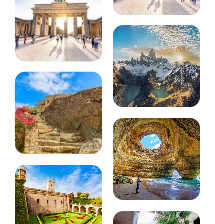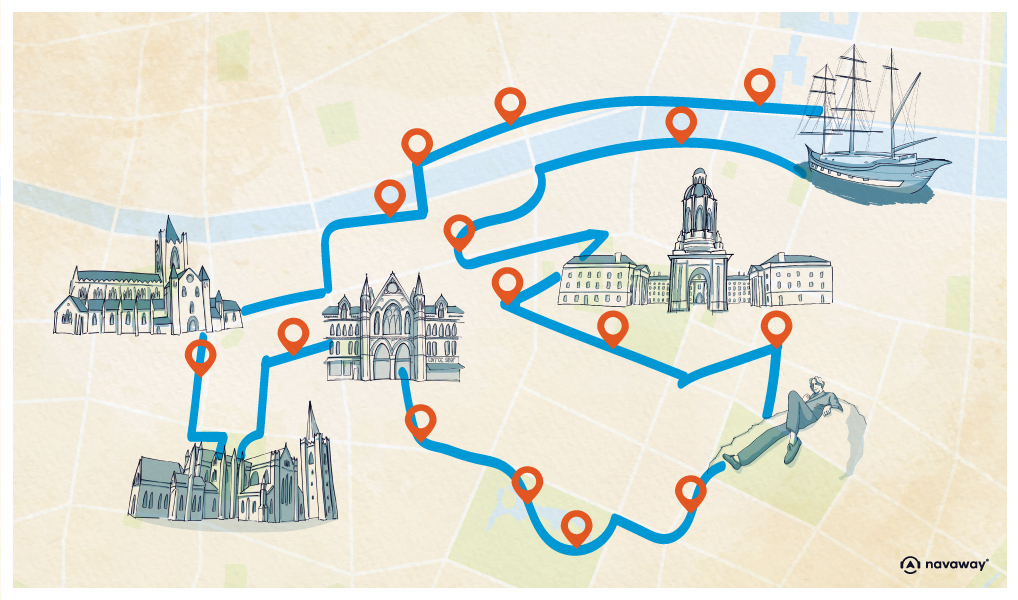
The 16 most beautiful places to visit in Ireland
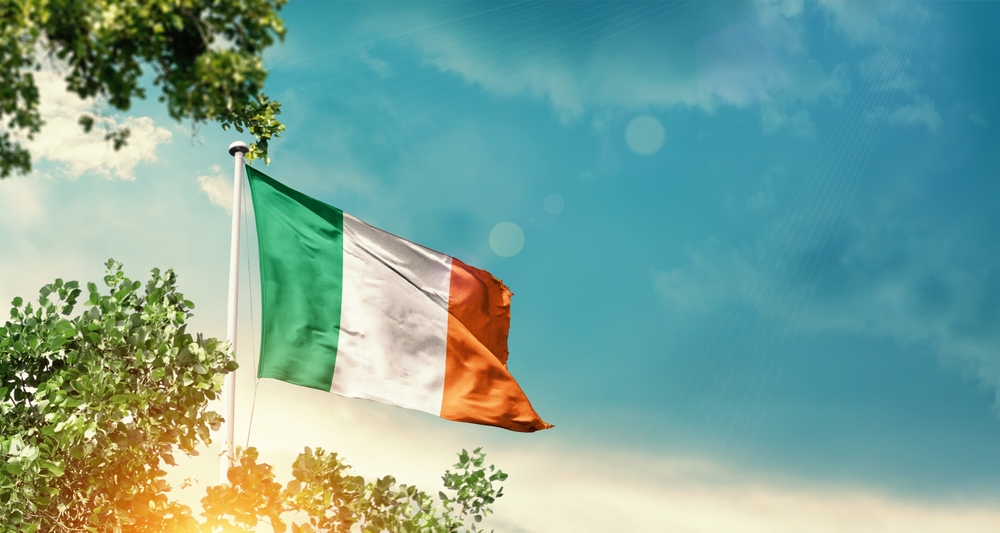
Ireland, nicknamed the Emerald Isle, is one of Europe’s most enchanting destinations. With lush green landscapes as far as the eye can see, towering cliffs battered by the Atlantic, colourful villages and a cultural heritage dating back thousands of years, Ireland offers a unique travel experience. Whether you’re a wilderness enthusiast, a history buff or simply looking for a change of scenery, this land of legends will win you over with its authenticity and the legendary warmth of its people. From the dynamism of Dublin to the mysterious expanses of Connemara, via UNESCO World Heritage sites, here are the 16 most beautiful places to visit in Ireland for an unforgettable trip.

Also read the Ireland guide:
- Top 10 things to do in Dublin
- Gastronomy: Ireland’s top 10 culinary specialities
- Top 10 culinary specialities in Dublin
1. Dublin, Ireland’s cosmopolitan capital
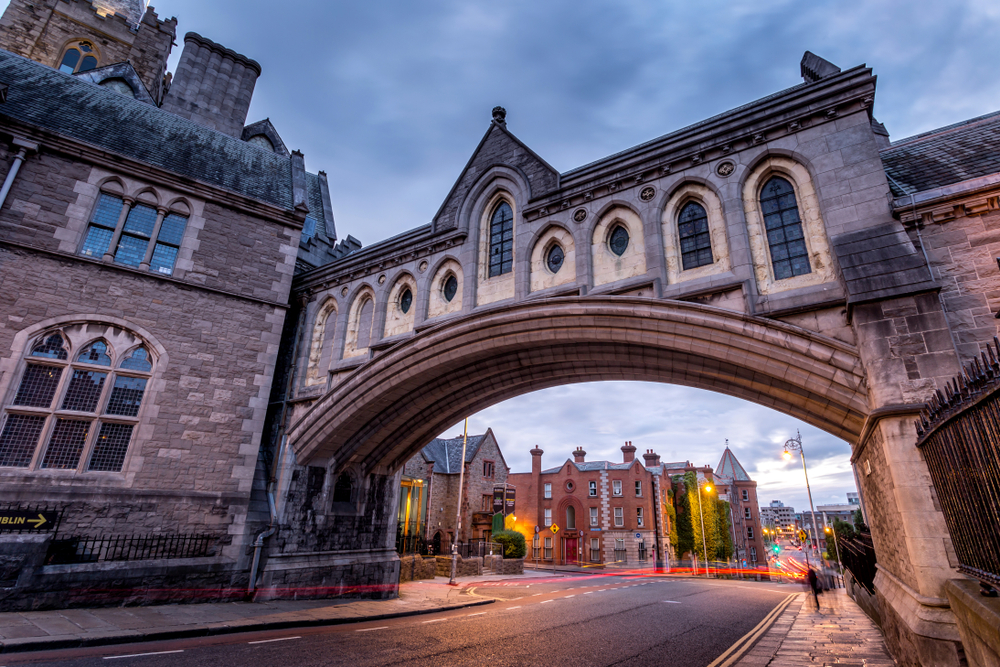
It’s impossible to imagine visiting Ireland without discovering Dublin, its dynamic and welcoming capital. This historic city on the banks of the River Liffey offers a fascinating blend of tradition and modernity. The heart of Dublin beats to the rhythm of its emblematic monuments such as Trinity College and its library housing the famous Book of Kells, an illuminated manuscript dating from the 9th century.
The Temple Bar district, with its cobbled streets and colourful facades, represents the festive soul of the capital. It’s here that you can enjoy an authentic pint of Guinness in one of the many traditional pubs enlivened by live music. Fans of this iconic black beer won’t want to miss a visit to the Guinness Storehouse (St James’s Gate, Dublin 8, D08 VF8H, rated 4.5/5 on Google with over 80,000 reviews).
Dublin also has some magnificent architectural sights in store, including Christ Church Cathedral and its medieval crypt, St Patrick’s Cathedral, Ireland’s largest church, and Dublin Castle, which bears witness to eight centuries of Irish history.
2. Galway, the cultural gem of Western Ireland
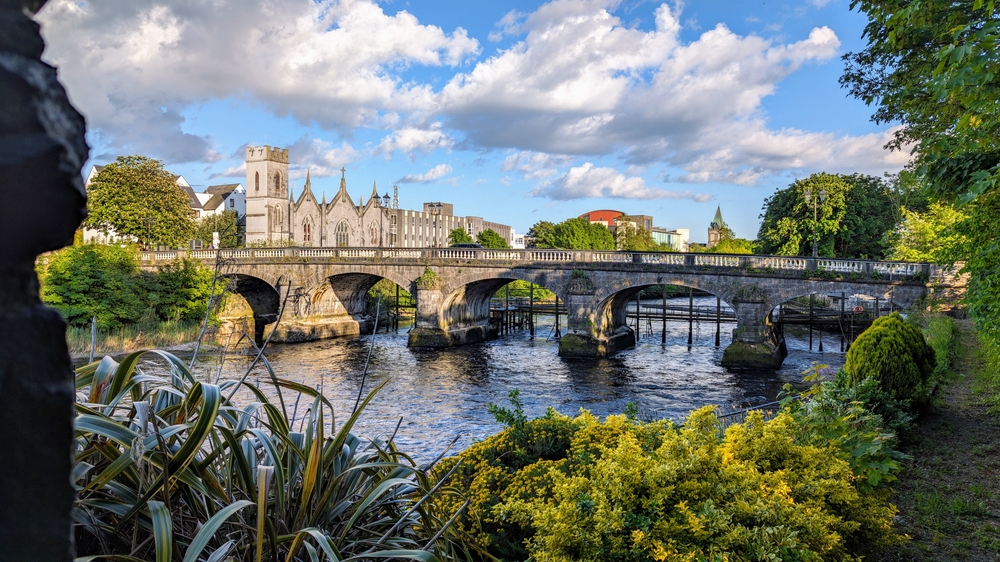
On the west coast of Ireland, Galway embodies the bohemian and artistic spirit of Ireland. This vibrant university town is renowned for its vibrant culture, traditional music festivals and friendly atmosphere. The Latin Quarter, the beating heart of Galway, will charm you with its colourful shops, cosy restaurants and pubs where the sounds of the fiddle and the bodhrán echo daily.
The Collegiate Church of St Nicholas (Market St, Galway, H91 V5KW, rated 4.6/5 on Google for over 3,500 reviews), the largest surviving medieval church in Ireland, is well worth a visit. The imposing Lynch’s Castle, a 16th-century fortified residence, bears witness to the past prosperity of the market town. Don’t forget to take a stroll along the Spanish Arch, a vestige of the 16th-century ramparts offering splendid views over Galway Bay.
3. Connemara, wild and unspoilt Ireland
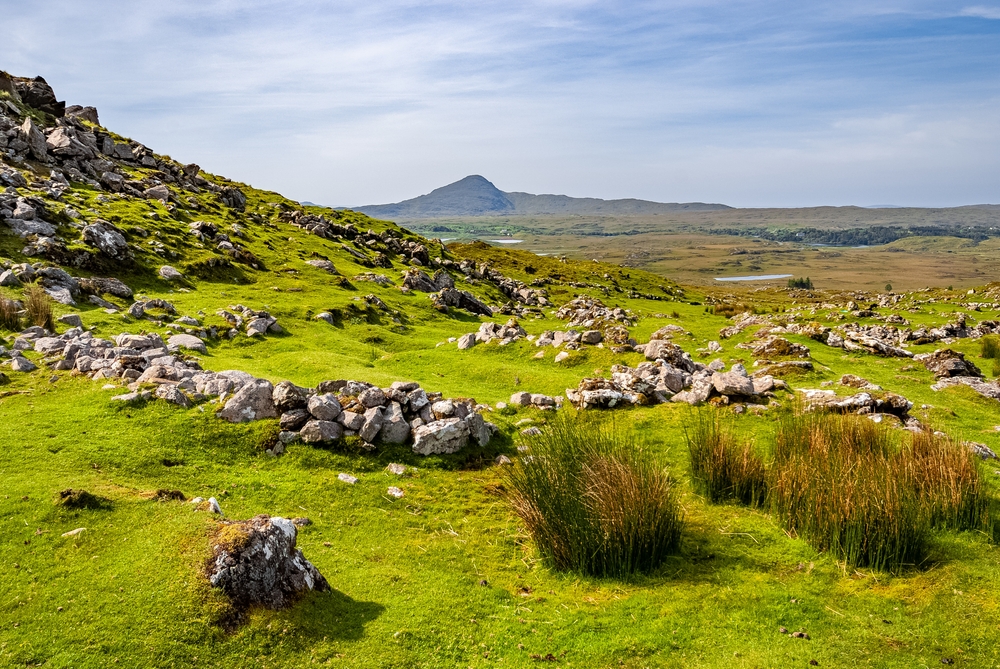
Just a few miles from Galway lies the legendary Connemara, an iconic region that epitomises the raw beauty of Ireland. The Connemara National Park (Letterfrack, Co. Galway, H91 PX49, rated 4.7/5 on Google with over 6,000 reviews) covers over 2,000 hectares of unspoilt wilderness. Three walking trails of varying levels of difficulty allow you to explore this magical land of rugged mountains, russet peat bogs, endless moorland, crystal-clear lakes and mysterious forests.
This awe-inspiring landscape, immortalised in Michel Sardou’s song, offers breathtaking panoramas from the summits of the Twelve Bens. Flora and fauna thrive in an environment still untouched by urbanisation: Connemara ponies, black-headed sheep, colourful peat bogs depending on the season. For walkers, the Diamond Hill Trail is one of the most rewarding routes, with spectacular views over the Atlantic Ocean and surrounding islands.
4. The Cliffs of Moher, Ireland’s natural icon
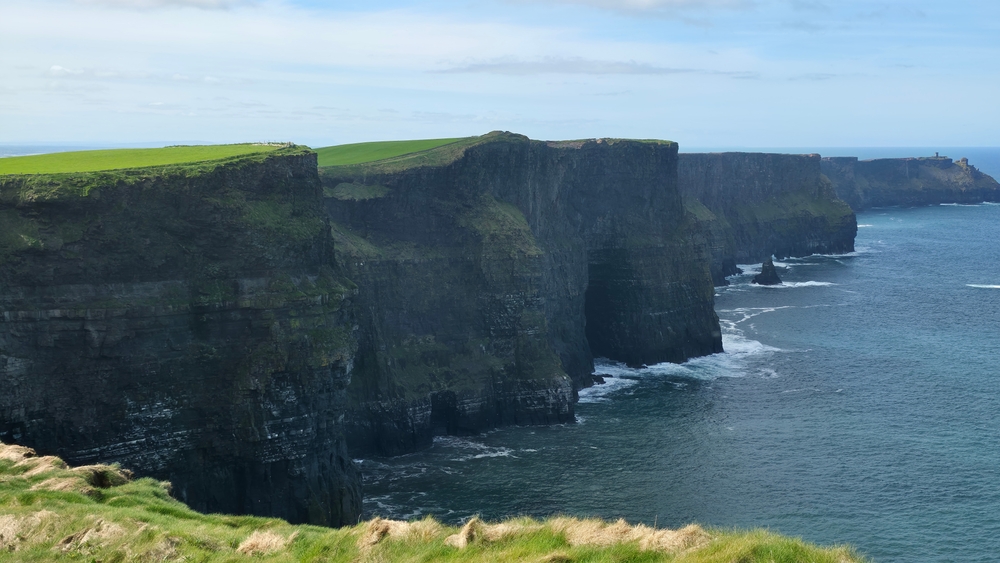
Among all the most beautiful places to visit in Ireland, the Cliffs of Moher (Lislorkan North, Co. Clare, V95 KN9T, rated 4.7/5 on Google for over 50,000 reviews) occupy a special place. These towering stone walls rise majestically over 8 kilometres into the Atlantic Ocean, reaching 214 metres in places. The sight of these wave-beaten cliffs is simply breathtaking, especially when the setting sun sets the rock faces ablaze.
The visitor centre, cleverly integrated into the hillside, features an interactive exhibition on the geology, wildlife and history of the site. From here, a number of paths offer different views of the cliffs. O’Brien Tower, built in 1835, offers exceptional views from its summit. On a clear day, you can see the Aran Islands and the mountains of Connemara. The cliffs are also home to one of Ireland’s largest colonies of seabirds, including puffins, fulmars and guillemots.
5. The Giant’s Causeway, Northern Ireland’s geological marvel
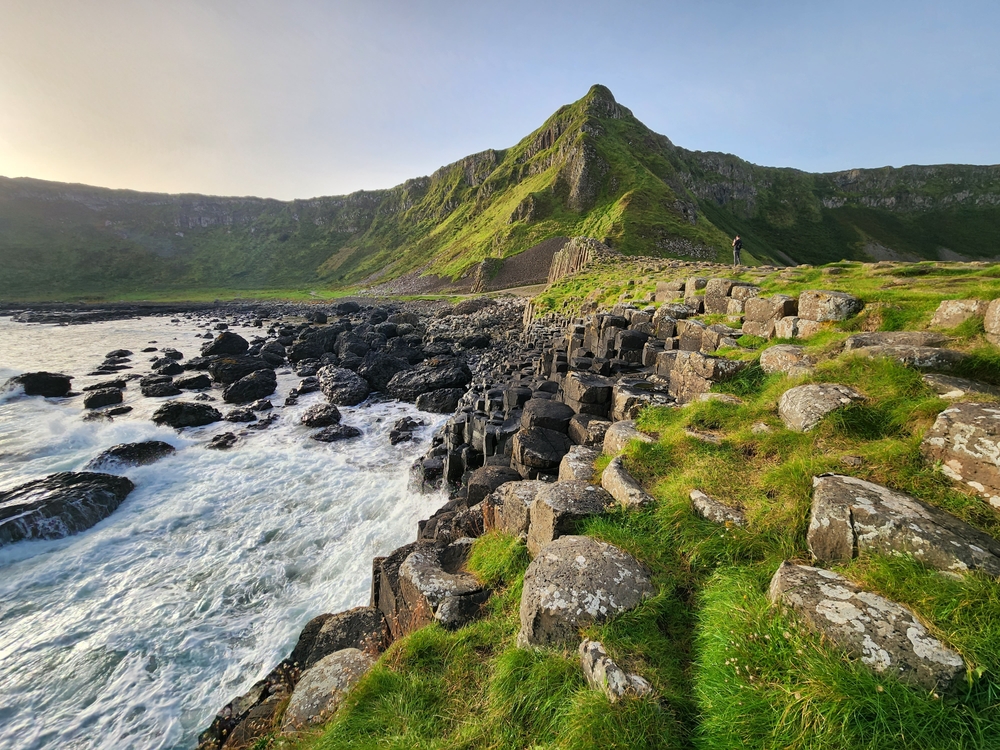
In Northern Ireland, the Giant’s Causeway (44 Causeway Rd, Bushmills, Co. Antrim, BT57 8SU, rated 4.6/5 on Google with over 45,000 reviews) is one of Europe’s most extraordinary geological formations. This UNESCO World Heritage Site is made up of some 40,000 hexagonal columns of basalt, the remains of a volcanic eruption that took place 60 million years ago. Some of these columns are up to 12 metres high, creating an absolutely unique landscape.
According to Irish legend, these columns were erected by the giant Finn MacCool to join his Scottish rival Benandonner across the sea. This fascinating rock formation can be explored on a number of guided tours, learning more about the site’s geology, mythology and ecosystem. The various sectors of the Chaussée bear evocative names such as “l’Orgue”, “la Chaussée”, “le Chameau” and “la Botte du Géant”, each offering unique formations to admire.
6. Belfast, Northern Ireland’s capital with a turbulent past
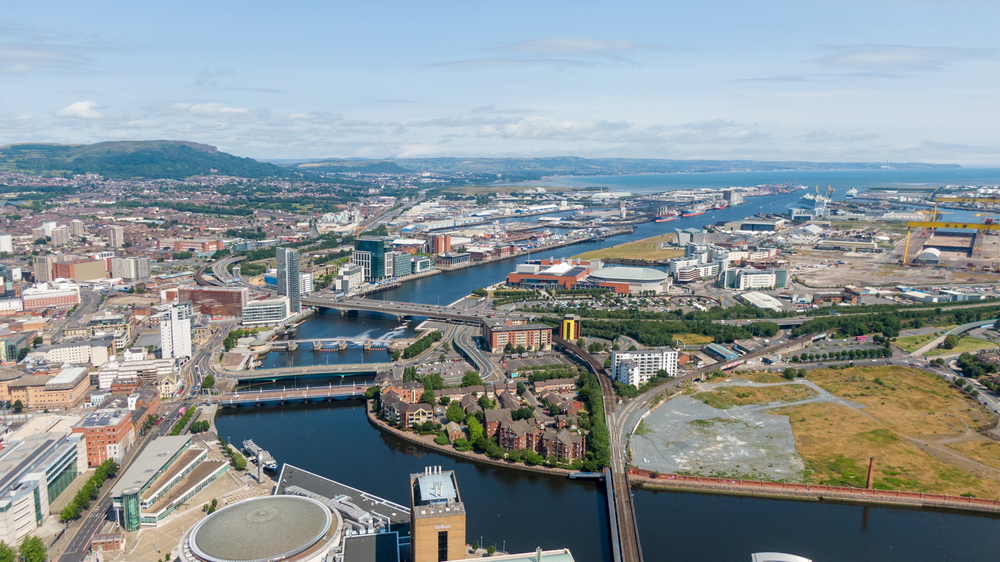
The capital of Northern Ireland, Belfast still bears the scars of its tumultuous history, visible in the famous peace walls that separate the Catholic and Protestant quarters. These murals tell the story of the Troubles, the conflict that marked the end of the 20th century. Despite this painful past, Belfast has metamorphosed into a dynamic and welcoming city that is well worth an in-depth visit.
The city’s Victorian architecture bears witness to its past prosperity, in particular the Grand Opera House (Great Victoria St, Belfast BT2 7HR, rated 4.6/5 on Google with over 1,800 reviews), a magnificent Italian-style theatre. The Titanic Belfast (1 Olympic Way, Queens Rd, Belfast BT3 9EP, rated 4.6/5 on Google with over 28,000 reviews) pays tribute to the famous ocean liner built in the city’s shipyards. The Botanic Gardens, Queen’s University and the Botanic Garden offer peaceful green interludes in the heart of the metropolis.
7. County Kerry and the Ring of Kerry
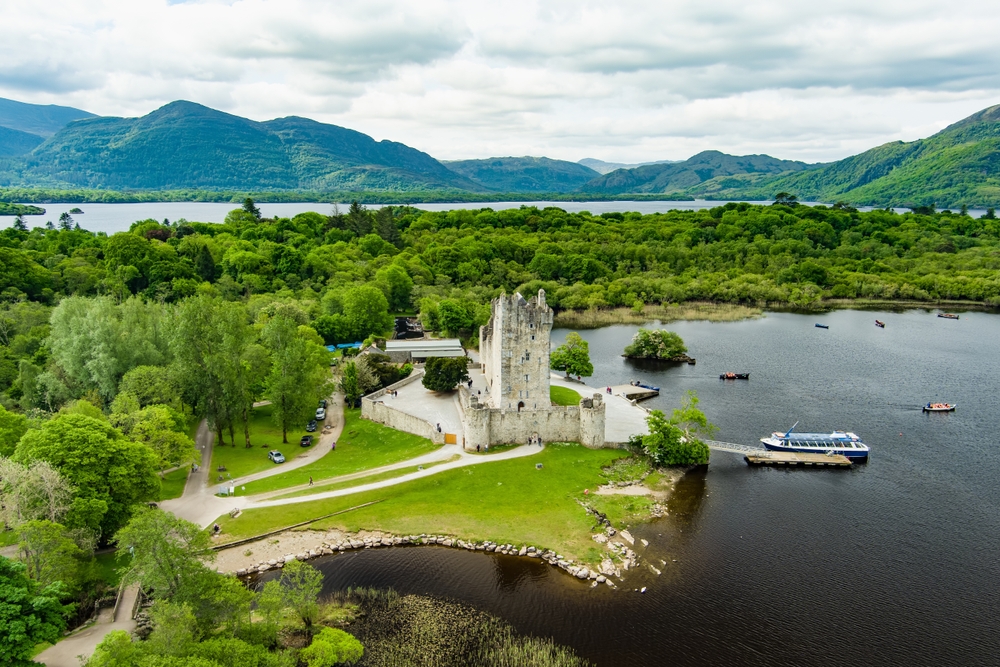
County Kerry is home to some of Ireland’s most spectacular scenery. TheRing of Kerry, a 179-kilometre scenic route around the Iveragh Peninsula, is one of the country’s most famous tourist routes. This enchanting route passes through picturesque villages, skirts jagged coastlines and winds between mountains and lakes, offering breathtaking views at every turn.
Along the way, you’ll discover remarkable sites such as Moll’s Gap, a breathtaking viewpoint over the Lakes of Killarney, the colourful village of Sneem and the imposing cliffs of Kerry. Killarney is an ideal base for exploring the region, with a friendly atmosphere and many historic monuments, including Ross Castle (Ross Rd, Ross, Killarney, Co. Kerry, V93 V304, rated 4.6/5 on Google out of over 9,000 reviews), which stands majestically on the shores of Lough Leane.
8. The Dingle Peninsula, Kerry’s authentic jewel
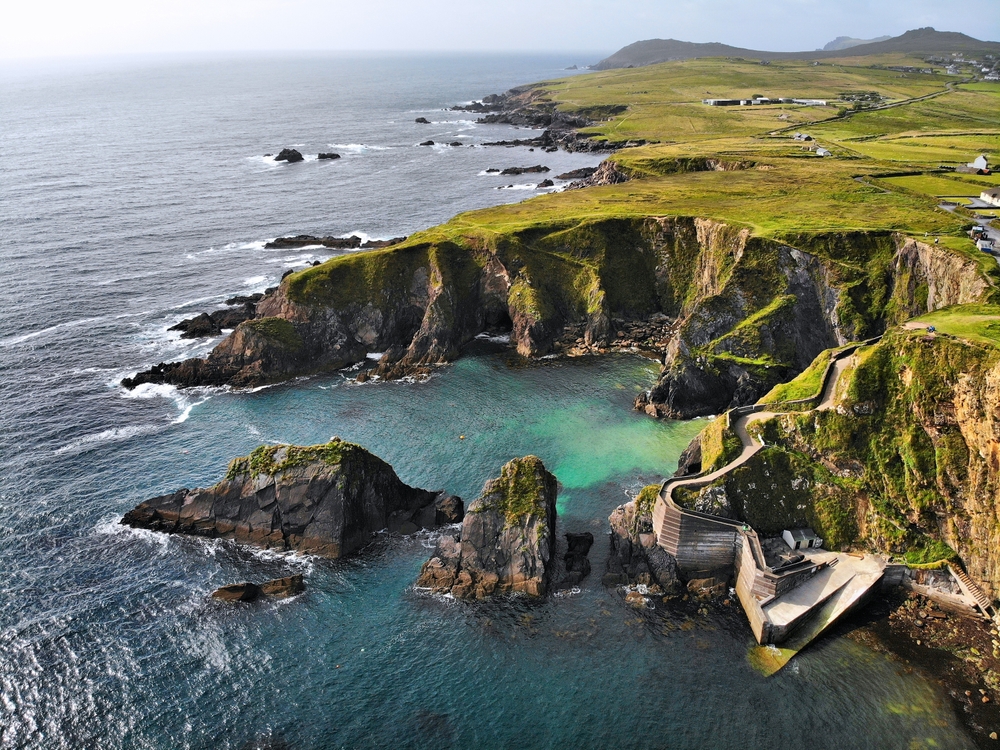
In the north of County Kerry, the Dingle Peninsula offers a more intimate and authentic experience than its neighbour, the Ring of Kerry. This wild tongue of land juts out into the Atlantic, dominated by Mount Brandon, which rises to 951 metres and offers spectacular views over the region. The mild climate and relative isolation have preserved an exceptional natural environment where ocean and mountain meet in a ballet of cliffs, golden beaches and lush green pastures.
The town of Dingle (An Daingean in Irish) is the beating heart of this Gaeltacht region, where Irish is still spoken fluently. Its traditional pubs boast live music every evening, while its restaurants serve the finest freshly caught seafood. The atmosphere here is resolutely authentic and warm, far removed from the hustle and bustle of the tourist trade. The beaches of Inch Beach and Slea Head, archaeological sites such as the Gallarus Oratory, and panoramic views from Slea Head Drive make this peninsula a must for anyone wishing to visit Ireland off the beaten track.
9. Skellig Michael, the mystical island of Star Wars

Off the coast of Kerry, the island of Skellig Michael rises dramatically out of the Atlantic Ocean, like a vertiginous rocky peak 218 metres above the waves. This UNESCO World Heritage site is home to the remains of a Christian monastery dating back to the 6th century, where monks lived in almost total isolation. Climbing the 618 steps carved out of the rock leads to the monks’ old dry-stone cells, perfectly preserved beehive-shaped structures that bear witness to extremely austere living conditions.
The island gained new international fame when it was used as the setting for episodes VII and VIII of the Star Wars saga, where it became the refuge of the Jedi Luke Skywalker. Access to Skellig Michael is strictly regulated to preserve this exceptional site: only a limited number of visitors can disembark each day between May and September, depending on weather conditions. The boat trip from Portmagee or Ballinskelligs is an adventure in itself, offering the chance to spot colonies of gannets, puffins and seals. This unique experience remains engraved in the memory of all those lucky enough to set foot on this mythical rock.
10. Cork, the rebel capital of the south

Ireland’s second city after Dublin, Cork proudly cultivates its rebellious spirit and distinct identity. This dynamic university city, built on several islands formed by the River Lee, is currently experiencing a remarkable cultural and economic boom. The city centre is full of architectural treasures that span the ages, from the Middle Ages to the present day, creating a harmonious blend of tradition and modernity.
St. Patrick’s Street, Cork’s main thoroughfare, is alive with shops, cafés and street performers. The famous English Market (Princes St, Centre, Cork, T12 KW89, rated 4.5/5 on Google with over 8,000 reviews), a Victorian covered market, will delight gourmets with its stalls brimming with fresh local produce. Cork’s cathedrals, notably St Mary and St Anne’s Cathedral, impress with their neo-Gothic architecture. In the evenings, the city centre’s pubs and restaurants come alive, offering inventive cuisine and live traditional Irish music in a warm, typically Cork atmosphere.
11. Kinsale, the colourful charm of the Irish Riviera
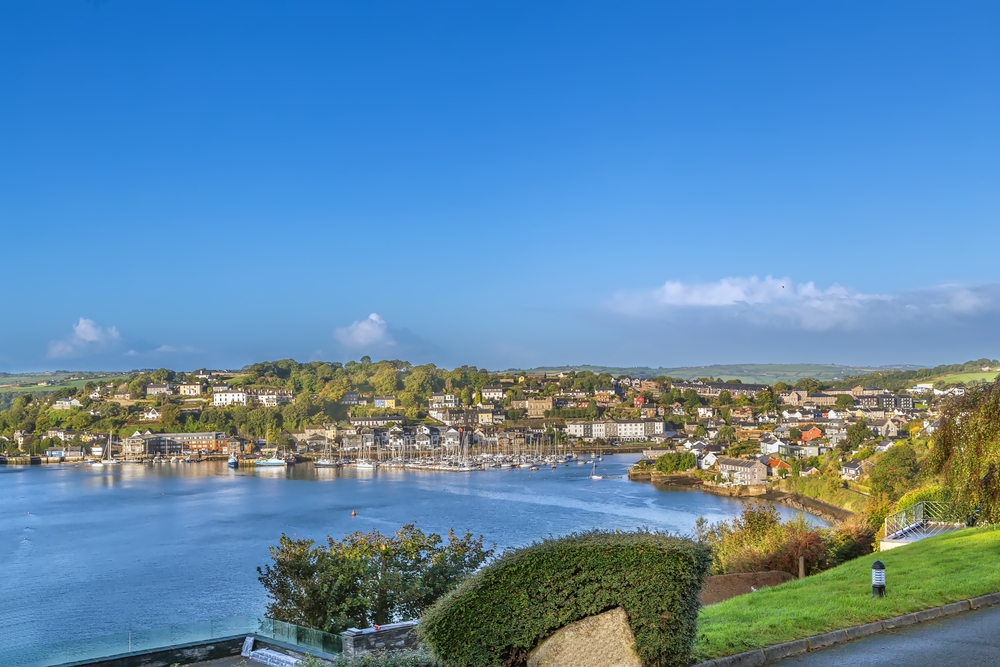
South of Cork, the harbour village of Kinsale is immediately captivating with its special atmosphere. Its colourful houses reflected in the peaceful waters of the harbour, its steep cobbled streets and its maritime atmosphere make it one of Ireland’s most photogenic villages. Kinsale has forged a reputation as one of the country’s gastronomic capitals, attracting food lovers who come to sample seafood in its many renowned restaurants.
Charles Fort (Summercove, Kinsale, Co. Cork, P17 XH67, rated 4.5/5 on Google for over 3,500 reviews), an imposing star-shaped fortress built at the end of the 17th century, majestically dominates the bay. This remarkably well-preserved fortification offers spectacular panoramic views of the harbour and ocean. The art galleries dotted around the village are a testament to the creative vibrancy of Kinsale, making every stroll an artistic discovery. The annual food festival attracts gourmets from all over the world each autumn, confirming the outstanding culinary reputation of this jewel in the south of Ireland.
12. The Rock of Cashel, a spectacular medieval fortress
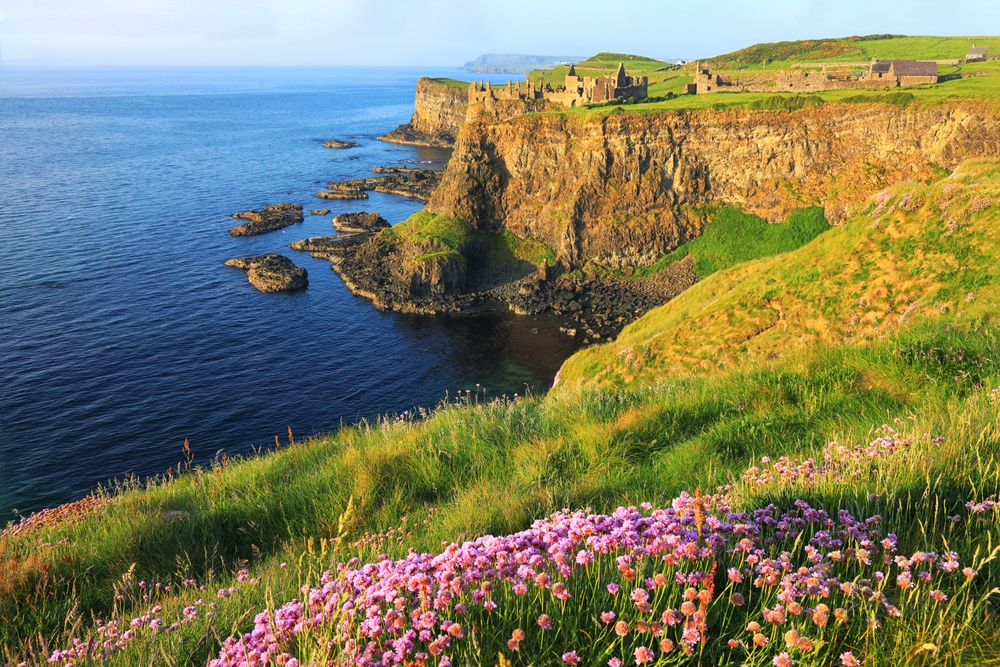
Perched on a rocky limestone outcrop almost 60 metres above the fertile Golden Vale plain, the Rock of Cashel (Moor, Cashel, Co. Tipperary, E25 KD80, rated 4.6/5 on Google with over 16,000 reviews) is one of Ireland’s most impressive medieval sites. This monumental complex brings together remarkable buildings from different periods: a 12th-century round tower, Cormac’s Chapel with its unique Romanesque frescoes, a 13th-century Gothic cathedral and St Patrick’s Cross.
For over 900 years, the Rock of Cashel was the seat of the Kings of Munster, symbolising their temporal and spiritual power. Legend has it that Saint Patrick himself converted King Aenghus to Christianity here in the 5th century. The architecture of the buildings bears witness to the evolution of architectural styles over the centuries, from Romanesque to late Gothic. A visit to this majestic site provides an insight into over a thousand years of Irish history, while enjoying exceptional views over the surrounding countryside of County Tipperary. The visitor centre features a multimedia exhibition contextualising the historical and spiritual importance of this Irish heritage site.
13. Coumshingaun Lough, a suspended glacial lake
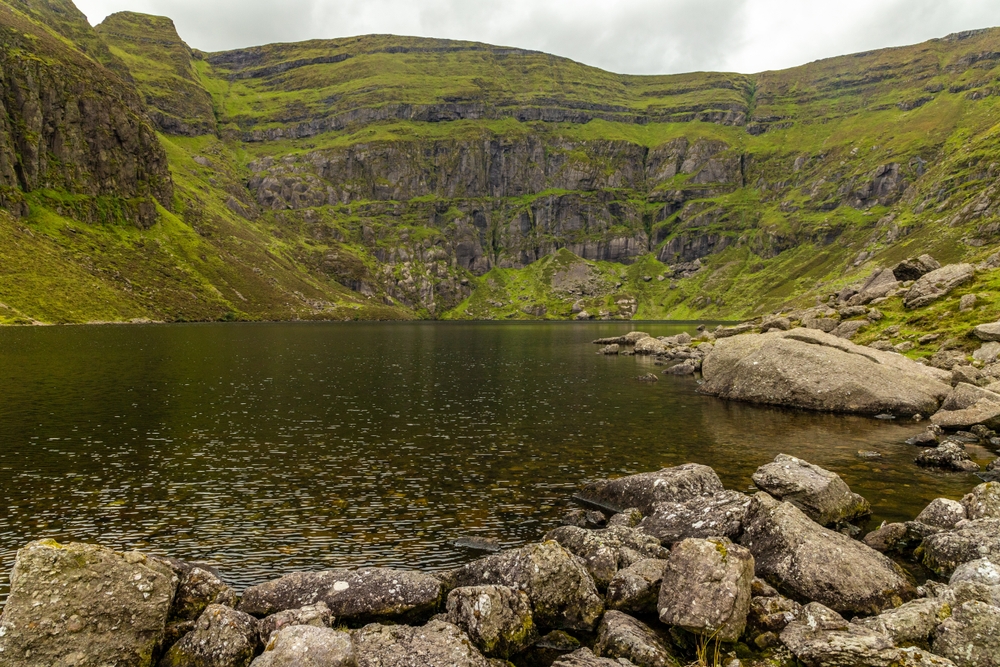
Nestling at the heart of a breathtaking natural cirque in the Comeragh Mountains, Coumshingaun Lough is one of Ireland’s most spectacular glacial lakes. Surrounded by near-vertical rock faces that plunge into its dark waters, this high-altitude lake offers a breathtaking natural spectacle to brave hikers who undertake the climb.
Coumshingaun Lough can be reached by walking for around 3 hours round trip from the nearest car park in County Waterford. The path climbs steadily through moorland and peat bogs before reaching the edge of the cirque, where the view down to the lake almost 400 metres below takes your breath away. The surrounding cliffs, some of the highest in Ireland, create a dramatic and wild atmosphere. This unspoilt site offers nature lovers and hikers the chance to immerse themselves in some of Ireland’s most authentic mountain scenery, far from the tourist crowds. On a clear day, the view from the summit stretches right out to the Irish Sea, more than rewarding the physical effort required to reach this hidden gem.
14. Kilkenny, the unspoilt medieval city
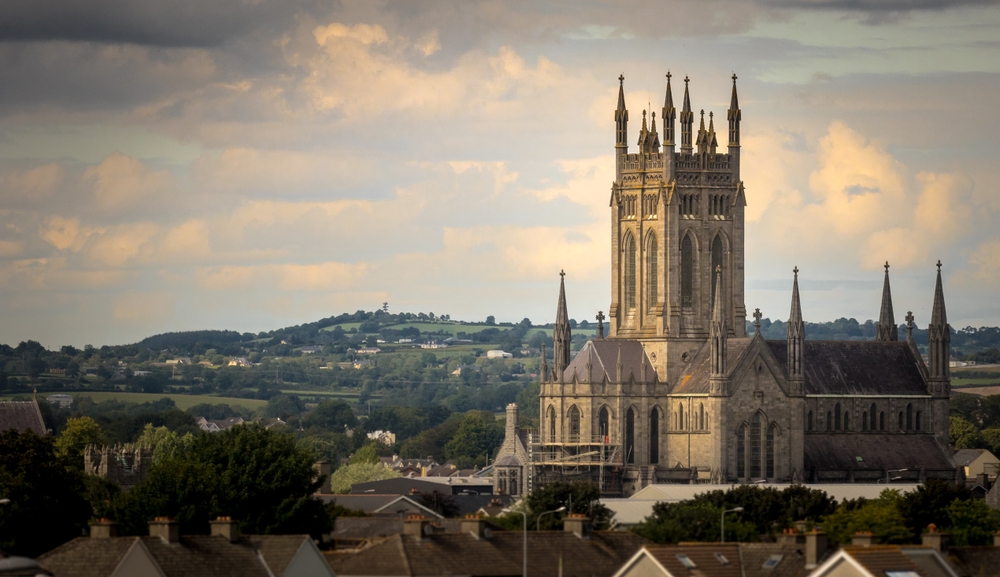
Known as “The Marble City” because of the black limestone quarried locally, Kilkenny is one of Ireland’s best-preserved medieval cities. Its remarkable architecture makes it a popular destination for those wishing to step back in time and discover medieval Ireland. The cobbled streets of the historic centre wind between ancient buildings and craft shops, creating a unique atmosphere of charm and authenticity.
Kilkenny Castle (The Parade, Gardens, Kilkenny, R95 YRK1, rated 4.6/5 on Google with over 12,000 reviews) majestically dominates the town from its position overlooking the River Nore. This Norman fortress, transformed into an elegant residence over the centuries, boasts sumptuous interiors adorned with tapestries, portraits and period furniture. St. Canice’s Cathedral, a jewel of 13th-century Gothic architecture, is another must-see, with its 9th-century round tower offering a 360° panoramic view of the city. Kilkenny is also famous for its eponymous beer and its many traditional pubs where you can enjoy a pint while listening to live Irish music.
15. Slieve League, the giant cliffs of Donegal
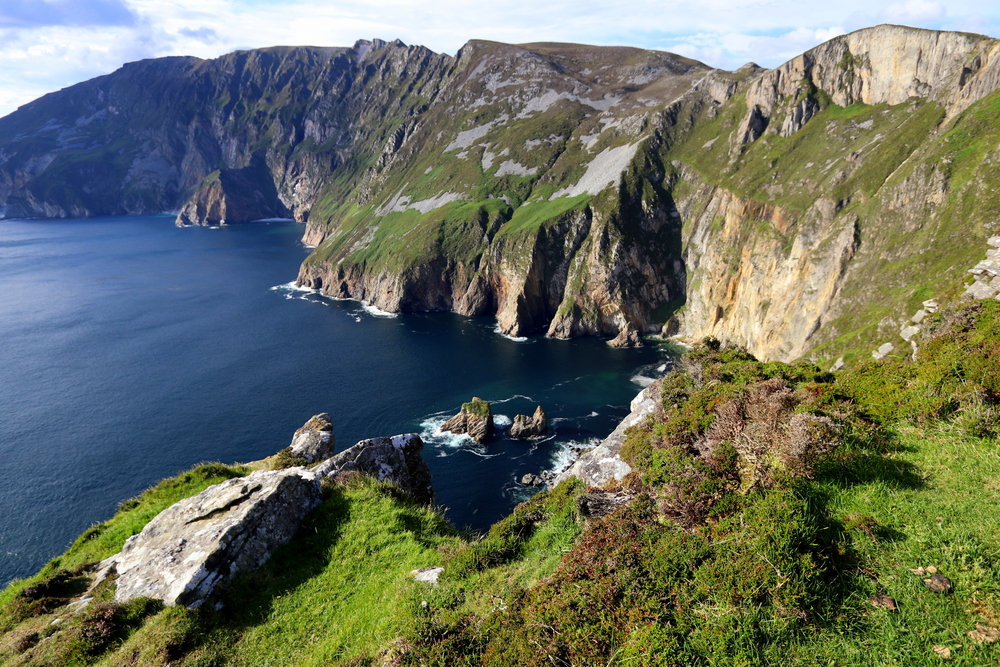
In County Donegal, in the far north-west of Ireland, stand the imposing cliffs of Slieve League (Sliabh Liag, Co. Donegal, F94 X2F2, rated 4.8/5 on Google for over 4,000 reviews), among the highest in Europe. Rising 601 metres above the Atlantic Ocean, these vertical walls of multicoloured rock offer an absolutely grandiose natural spectacle that is less frequented than the famous Cliffs of Moher.
Visitors have several options for discovering these giants of stone: a demanding but rewarding hiking trail leads to the summit along the wind-exposed ridge, offering breathtaking panoramas of the ocean below. For the less adventurous, a viewpoint accessible by car allows you to admire the cliffs from a secure belvedere. The changing colours of the rock in the light of day create an ever-changing natural tableau, from orange hues at sunrise to golden reflections at dusk. This remote part of Donegal preserves a wild and authentic atmosphere, where sheep graze freely on the grassy slopes and Gaelic still resonates in the surrounding villages. A visit to the cliffs of Slieve League is an off-the-beaten-track getaway for lovers of raw nature and wide-open spaces.
16. Glenveagh National Park, Donegal’s wild gem
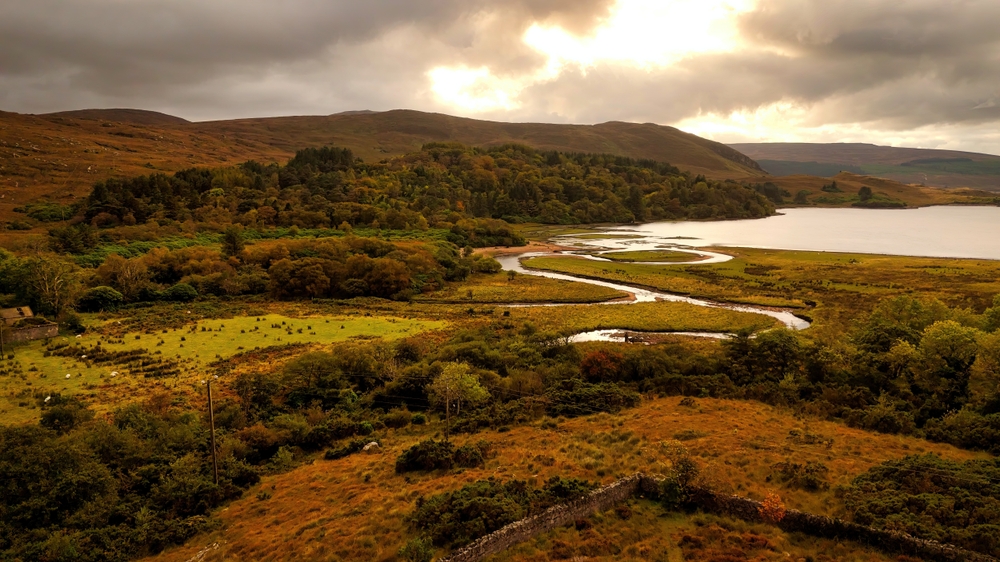
Also in County Donegal, Glenveagh National Park (Church Hill, Letterkenny, Co. Donegal, F92 XC2N, rated 4.8/5 on Google with over 6,500 reviews) covers 16,000 hectares of unspoilt wilderness, making it Ireland’s second largest national park. This vast expanse encompasses landscapes of exceptional diversity, from the rugged mountains of Derryveagh to deep glacial valleys, shimmering lakes, heather-clad bogs and ancient oak forests.
Glenveagh Castle, a romantic 19th-century residence built in the Scottish Baronial style, sits on the shores of Lough Veagh. Accessible only on foot or by shuttle bus, the castle boasts richly decorated interiors and is surrounded by sumptuous Victorian gardens where subtropical plants flourish thanks to the temperate climate. Walkers can follow several signposted trails through the park, including the one leading to the Poisoned Glen, a mysterious valley with an evocative name. The park’s wildlife includes a large population of red deer, which have been successfully reintroduced after having disappeared from the area. Glenveagh National Park offers total immersion in Ireland’s wildest nature, crowning a magnificent tour of the most beautiful places to visit in Ireland.
In conclusion, Ireland is an exceptionally rich destination, with each region revealing its own treasures. From the vibrant cities of Dublin and Galway to the wild landscapes of Connemara and Donegal, not forgetting the geological wonders of the Giant’s Causeway and the Cliffs of Moher, the Emerald Isle never ceases to surprise and amaze its visitors. Whether you prefer to discover its historic heritage, explore its unspoilt nature or immerse yourself in authentic Celtic culture, these 16 most beautiful places to visit in Ireland are an invitation to travel to a country where the beauty of the landscape is matched only by the warmth of the welcome. Ireland awaits you for a memorable adventure in the land of legends, where every turn of the road reveals a new picture worthy of a postcard, and where a thousand years of history still echoes around every corner.
FAQ : Visiting Ireland
When is the best time to visit Ireland?
The best time to visit Ireland is from May to September, when the temperatures are mildest (15-20°C) and the days are longest. July and August are the busiest months for tourists. If you want to enjoy lush green landscapes with fewer crowds, opt for May-June or September. Autumn also offers beautiful colours, although it is wetter. Winter remains relatively mild but rainy, with short days.
How many days does it take to visit Ireland?
To discover the most beautiful places to visit in Ireland, allow at least 7 to 10 days. A one-week itinerary covers Dublin, Galway, Connemara and the Cliffs of Moher. With 10 to 14 days, you can add the Ring of Kerry, Cork, Belfast and the Giant’s Causeway. For an in-depth exploration including less touristy areas such as Donegal, allow 2 to 3 weeks.
Do I need to hire a car to visit Ireland?
Car hire is highly recommended if you want to visit Ireland in complete freedom, especially to explore rural areas, scenic routes such as the Ring of Kerry and isolated natural sites. Please note: driving in Ireland is on the left. For those who prefer not to drive, there are tourist buses and organised excursions from the major cities. The train network links the main towns, but is limited for access to natural sites.
What is the budget for a trip to Ireland?
Ireland is a relatively expensive destination. Expect to pay an average of €100-150 per day per person for a comfortable trip (B&B accommodation, restaurant meals, car hire, entrance fees to sites). Backpackers can get by on €60-80 a day if they opt for youth hostels and pubs. Accommodation is the main expense (€80-150/night in a hotel, €30-50 in a hostel). A pint of beer costs €5-7, and a restaurant meal €15-30.
Can I visit Northern Ireland with the Republic of Ireland?
Absolutely! Despite the political border between the Republic of Ireland and Northern Ireland (part of the United Kingdom), there have been no physical border controls since the Good Friday Agreement of 1998. You can travel freely between the two territories by car or bus. Just note that Northern Ireland uses the pound sterling (£) while the Republic uses the euro (€). The most beautiful places to visit in Northern Ireland include Belfast, the Giant’s Causeway and the Causeway Coast.
200 audioguided tours for cities all around the world
Download